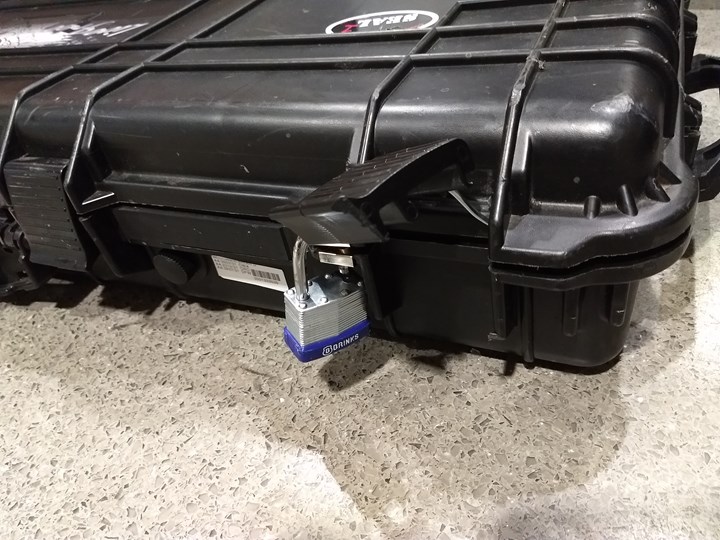
by Brian McCombie - Monday, November 9, 2020

I do a fair amount of flying to and from hunts, and my guns and gear have taken their share of beatings.
I’ve had gun cases that looked fine when I picked them up at baggage claim, only to discover hours later in hunting camp that something had struck the case hard enough to damage the optic or ding a rifle. Gun cases have arrived at my destination with deep scratches down the side; one case had the roller wheel torn off. Once, my gun case arrived with one of the latches and the padlock that had been securing the latch gone—completely sheared off, no latch, no padlock.
Last year, on my return trip home, I picked up my gun case and discovered that one of the latches had been pulled away from the body of the case, twisted up and out like the broken wing on a bird. The spring and other hardware securing the latch to the case were beyond repair.
Scrapes and gouges to a gun case I take as a given. But a busted lock latch made that particular gun case unusable for future hunts. So, what to do?
If you are a hunter who frequently flies, it’s a question you will eventually have to answer. I have made a claim for a damaged case or gear more than once. I’ve also read over the damaged baggage sections on the websites of these major airlines (more than once in the past and again for this article): American Airlines; Delta Airlines; and United Airlines.
Actually, the process I went through with the broken latch on my gun case followed the airlines’ recommendations, though I’ve added a few of my own ideas here, too.
So, for the hunter traveling by air:
1—Inspect your baggage at the airport. If there’s obvious damage, head right to the baggage office or the airline counter.
2—Make sure an airline employee views the damage, and explain (if needed) why it’s a problem. Get the employee’s name and note the date and time.
3—With your cell phone, take several photos of the damage.
4—The airline employee should have you fill out a damaged baggage claim. Make sure the claim report has a reference number. Without that number, you won’t be able to make your claim.
5—At some point, the airline should contact you about your claim. They will want an estimate on the cost or value of the item(s) damaged. Receipts work best, but you may be able to use web links to retail pages.
6—Don’t toss the damaged item(s) until you receive compensation. The airline could change its mind, leaving you with your word against theirs.
But what if you don’t notice the damage until you are away from the airport?
Call the airline’s baggage claim office as soon as you discover damage. They may be able to do your claim form over the phone or Internet, though some airlines will require you to bring the damaged bag back to the airport so an employee can view the damage.
Keep in mind, too, that an airline may have a limit on the amount they will compensate. United Airlines, for example, will only compensate for damage to checked bags up to $3,500 on a domestic flight per ticketed passenger, and actually less for international flights (based on fluctuating currency values for the latter).
If you are traveling with pricey gear, you might want to purchase a travel insurance policy that specifically covers your gear. Various policies will have different claim limits and deductibles.
Of course, it helps a good deal to have very sturdy gun and gear cases, and to pack your items securely, using foam inserts, for example, to make sure items don’t shift during transport.
But even the highest quality cases can be put to the test. If the worst happens, be ready to make a claim.
E-mail your comments/questions about this site to:
[email protected]
Proudly supported by The NRA Foundation and Friends of NRA fundraising.
